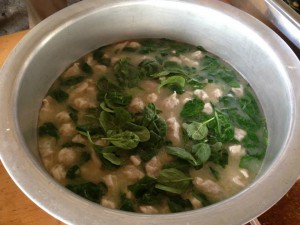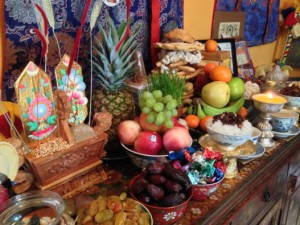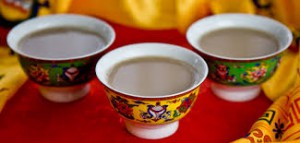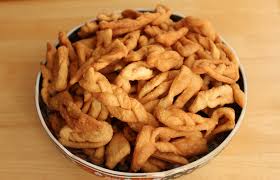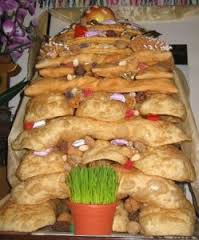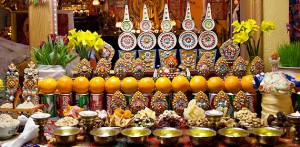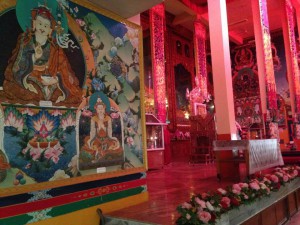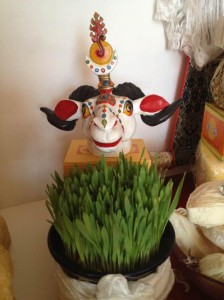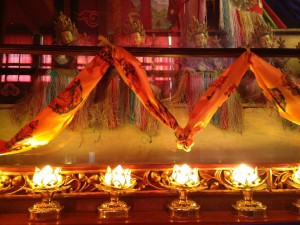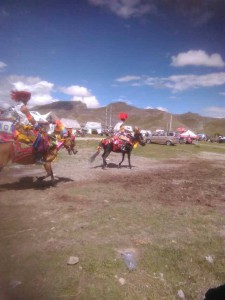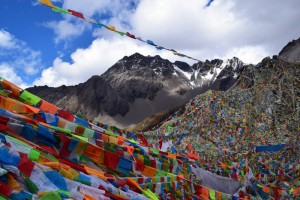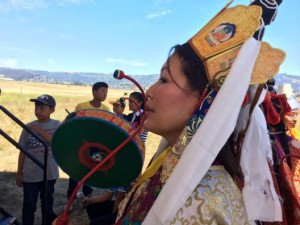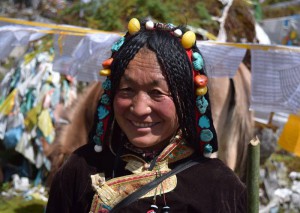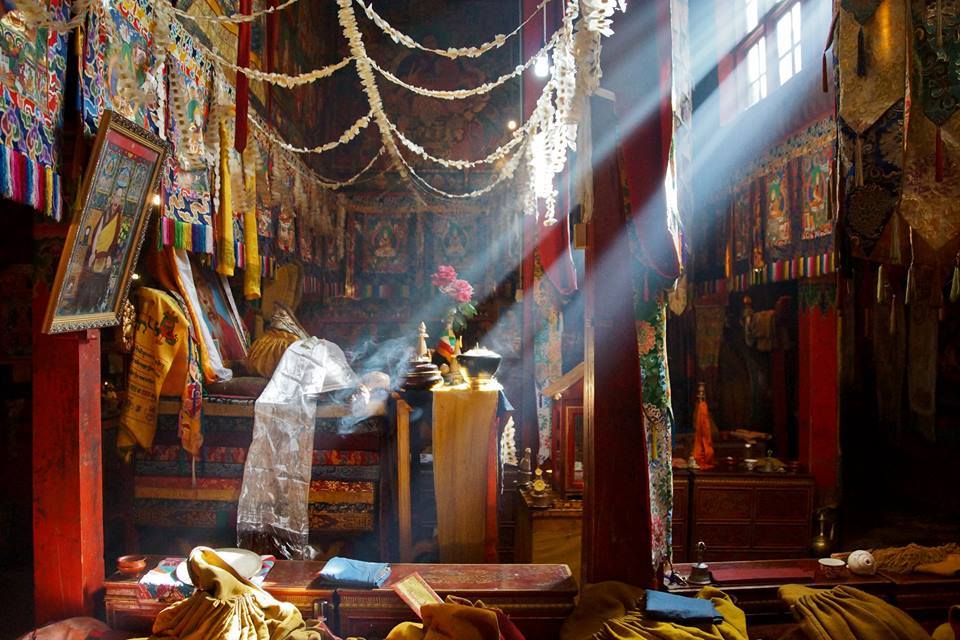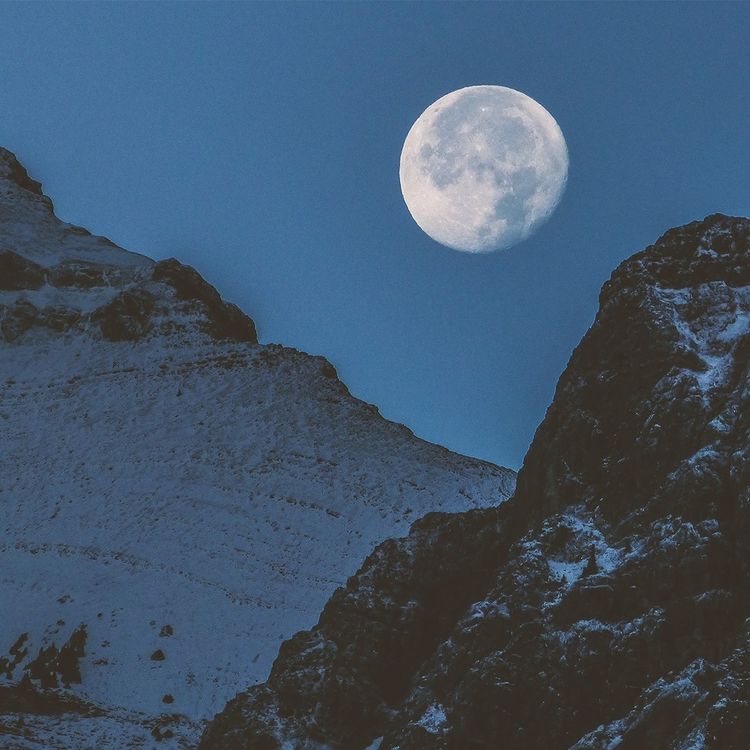Tibetan New Year – Losar (Shambhala Day)
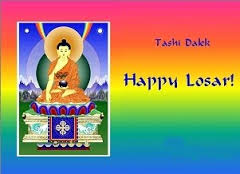 Tibetan New year, also known as Losar, is the most important festival in the Tibetan calendar. Tibetan New Year is said to last 15 days, but the first 3 days are most important. It is mainly celebrated over a period of 3 days in late January or February, according to the Tibetan calendar. (Chögyam Trungpa, Rinpoche, named Tibetan New Year’s ‘Shambhala Day’ for his students.)
Tibetan New year, also known as Losar, is the most important festival in the Tibetan calendar. Tibetan New Year is said to last 15 days, but the first 3 days are most important. It is mainly celebrated over a period of 3 days in late January or February, according to the Tibetan calendar. (Chögyam Trungpa, Rinpoche, named Tibetan New Year’s ‘Shambhala Day’ for his students.)
The Tibetan Calendar
The Tibetan calendar consists of 12 (or 13) lunar months, and Losar begins on the first day of the Tibetan year. The Tibetan calendar is lunisolar and almost identical to the Chinese calendar.
Tibetan New Year is the same as Chinese New Year, a day earlier, or a day later. The adding of a 30-day month is occasionally done differently (e.g. in 1966), making Tibetan New Year a month later than Chinese New Year.
The Story of Losar
The wordl>osar is a Tibetan word which means New Year. The word is composed of two characters: lo and sar. Lo means ‘year’ and sar means ‘new’.
The celebration of Losar can be traced back to the Tibetan pre-Buddhist period (127 BC – 629 AD). At that time Tibetans were followers of the Bon religion, and held a spiritual ceremony every winter. During the ceremonies, people burnt a large quantity of incense to appease local spirits, deities, and protectors. Later this religious festival developed into an annual Buddhist festival.
Festival Activities
Losar is celebrated by Tibetan people. It is marked with ancient ceremonies that represent the struggle between good and evil. There is chanting and passing of fire torches through the crowds.
A certain amount of levity is provided by events such as the dance of the deer and the amusing battles between the King and his various ministers. Losar Festival is characterized especially by dancing, music, and a general spirit of merrymaking. Please click here for many beautiful photos of the Losar traditions in Tibet.
Losar Day 1
During the last two days of the old year, which is called Gutor, people in Tibet begin to prepare for the New Year.
The first day of Gutor is spent doing the house cleaning. The kitchen especially must be cleaned because it is where the family’s food is prepared, and hence is the most important part of the house. The chimney is also swept free of dirt. Special dishes are cooked. One such dish is a soup served with small dumplings. The soup is made from meat, wheat, rice, sweet potatoes, cheese, peas, green peppers, vermicelli and radishes. The fillings for dumplings include scraps of wood, paper, or pebbles.
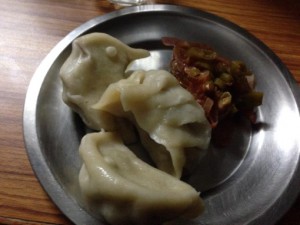 Momos, a special dish. Photo: www.yowangdu.com Momos, a special dish. Photo: www.yowangdu.com |
The celebration of Losar begins on the 29th day of the 12th month of the Tibetan calendar, the day before Tibetan New Year’s Eve. On that day monasteries hold a special kind of ritual in preparation for the Losar celebrations. In addition a kind of special noodle is prepared, called guthuk, which is made of nine different ingredients including dried cheese and various grains.
Dough balls: Also, people place various ingredients, such as chilies, salt, wool, rice, and coal, in dough balls, which are then handed out. The ingredients that one finds hidden in one’s dough ball are supposed to be a lighthearted comment on one’s character. For example, if a person finds chile in his dough, that means he is talkative. If white-colored ingredients such as salt or rice are hided in the dough, it is believed as a good sign. If someone finds coal in his dough, it has the same meaning as finding coal in a Christmas stocking; it means that one has a “black heart”.
Losar Day 2
On the second day of Gutor, religious ceremonies are held. People go to visit the local monastery to worship and give gifts to the monks. Tibetans also set off firecrackers to get rid of evil spirits, which are believed to be lurking around.
The last day of the year is a time to clean and prepare for the approaching New Year. Houses are thoroughly cleared, after which people get dressed, and proceed to have a reunion feast, which is similar in spirit to the Han Chinese New Year feast.
Losar Day 3
On Tibetan New Year’s Day, Tibetans get up early, and put on new clothes after having taken a bath. They then worship the gods by placing offerings in the front of their household shrines. The offerings usually consist of animals and demons made from a kind of dough called torma. In addition this day is for family members to exchange gifts. Families also have a reunion dinner, which usually consists of a kind of cake called kapse and an alcoholic drink called chang, which is drunk to keep warm.
Traditionally, on the first day of the New Year, the housewife will get up very early. After cooking a pot of barley wine for the family, she will sit beside the window awaiting the sunrise. As the first ray of sunshine of the New Year touches the nearby earth, the housewife takes a bucket and heads for a nearby river, or well, to fetch the year’s first bucket of water, which is seen as the most sacred, clearest water of the coming year. The family that fetches the first bucket of water from the river/well is believed to be blessed with good luck for the coming year.
Monastery Activities
On the first day, Lamas will hold religious celebrations, which include worshiping Buddhist deities, chanting Buddhist scriptures, and having a new year banquet.
|
|
On the second day, people visit friends and relatives. At night Tibetans whirl burning torches in the homes to drive away evil spirits. [ed.: This could be equivalent to a lhasang.]
On the third day, Tibetans in Lhasa especially visit the local monasteries, where they make offerings.
Customs
It is a tradition for people living in Shigatse and Lhasa to keep their yards and kitchens clean and tidy during Tibetan New Year, when the locals put up New Year paintings on the doors to add luster to the festival.
The dishes served during Tibetan New Year are traditionally dominated by mutton, including dried mutton, boiled mutton, and roast mutton.
A number of cultural entertainment performances take place during Tibetan New Year, including horse-racing, arrow-shooting, singing, and dancing.
Thanks to China Highlights, Travel Guide, an online travel agency, for the descriptions of Losar on their website http://www.chinahighlights.com/tibet/new-year.htm.
Special thanks to the YoWangdu Tibetan Culture Education Website, www.yowangdu.com for giving us permission to use their beautiful photos.
For more interesting and beautiful photos of all aspects of celebrating Losar in Tibet, click here.
— compiled by Nancy Smith

